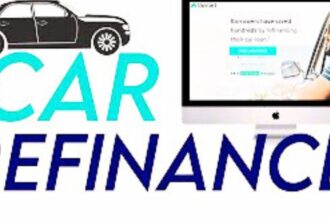Buying a used car is a smart financial move. However, arranging the right financing can be confusing.
Thankfully, the used car loan process is now more streamlined and accessible than ever before. With the right knowledge, you can secure affordable financing with ease.
This guide covers everything you need to know, from eligibility to loan approval. Keep reading to make informed choices and avoid costly mistakes.
Why Used Car Loans Matter
Used car loans help people own reliable vehicles without upfront cash. They make car ownership more affordable.
Whether you’re buying from a dealer or individual, loans bridge the financial gap.
Understanding the process gives you confidence and helps you avoid common pitfalls.
How Car Loans Work
Used car loans are personal or auto-specific loans. You repay over time, usually in monthly installments.
Loan providers include banks, credit unions, and NBFCs. Each has different interest rates and terms.
Securing the best offer requires knowing your credit score, budget, and vehicle value.
Who Can Apply for Loans
To get a used car loan, applicants must meet basic eligibility. Lenders check income, job stability, and credit history.
Most banks require a minimum monthly income. Age restrictions also apply, usually 21 to 65 years.
Self-employed and salaried individuals can both qualify with proper documentation.
Documents Required for Loan
Getting a used car loan involves paperwork. Prepare these documents for faster processing:
-
Identity proof (Aadhar, PAN, passport)
-
Address proof (utility bill, rental agreement)
-
Income proof (salary slips, bank statements)
-
Car registration and insurance details
Submit originals and photocopies as per lender instructions.
Steps in Loan Approval
1. Check Loan Eligibility
Use online tools or consult with banks to understand eligibility. Include income, age, and employment type.
2. Select Loan Provider
Compare interest rates, processing fees, and EMI options. Public banks often have lower rates.
3. Submit Documents
Provide KYC, income proof, and car details. Ensure they’re current and valid.
4. Get Car Valuation
Lender evaluates car’s market value. This decides loan amount and tenure.
5. Wait for Sanction
Loan officer processes the application. Approval time varies—usually 2–7 days.
6. Sign Agreement
Once approved, sign the loan agreement. Funds are disbursed directly to the seller.
Interest Rates and Tenure
Used car loan interest rates range between 8%–18%. Rates depend on car age, credit score, and lender policy.
Loan tenure varies from 12 months to 7 years. Shorter tenure means higher EMI but lower total interest.
Use EMI calculators to compare monthly costs for various terms.
Types of Lenders Compared
Banks
Offer lower interest but have stricter eligibility. Good for high credit score individuals.
NBFCs
Easier processing, more flexible, but slightly higher rates. Ideal for average credit history.
Online Lenders
Quick approvals and minimal paperwork. Convenient for tech-savvy borrowers.
Tips to Get Better Rates
-
Maintain a good credit score (700+ preferred)
-
Choose a newer model for higher valuation
-
Opt for shorter tenure if affordable
-
Compare loan offers before applying
-
Pay processing fees only after sanction
Pros and Cons of Loan
Pros:
-
No need to pay full amount upfront
-
Improves credit score on timely payment
-
Flexible terms available
Cons:
-
Adds interest to vehicle cost
-
Late EMIs impact credit
-
Car may be repossessed on default
Prepayment and Foreclosure
You can close your loan early, but prepayment charges may apply.
Check if your lender allows partial prepayment or foreclosure. Public banks usually have lenient policies.
Early closure reduces interest burden and improves credit profile.
Credit Score and Loan Terms
A higher credit score gets you better rates and faster approvals. Scores above 750 attract premium offers.
Check your score before applying. Correct any errors to improve chances.
Use free services like CIBIL or Experian for score check.
Used Car Valuation Basics
Car age, brand, mileage, and condition affect valuation. Lenders often inspect the car physically.
Get an independent valuation before applying. Tools like offer online estimates.
This avoids under-loaning or overpricing.
Loan vs. Leasing Used Cars
Leasing isn’t common for used cars in most countries. Loans are more flexible and end with car ownership.
Lease may have lower monthly payments, but you don’t own the car.
Loans suit buyers seeking long-term ownership.
Common Mistakes to Avoid
-
Not comparing interest rates
-
Ignoring hidden charges
-
Taking longer tenure unnecessarily
-
Skipping insurance or valuation
-
Missing EMI deadlines
Avoiding these errors can save thousands over time.
External Resources
Conclusion
The used car loan process is simple if you’re prepared. Knowing the steps, documentation, and tips makes a big difference.
Compare lenders, read the fine print, and borrow within limits. This ensures a smooth experience and financial safety.
Drive your dream car without financial stress—just follow this guide.










